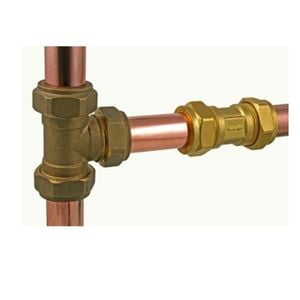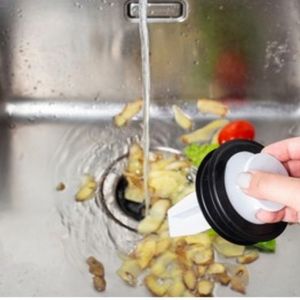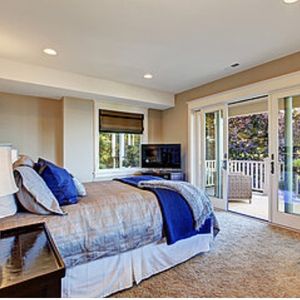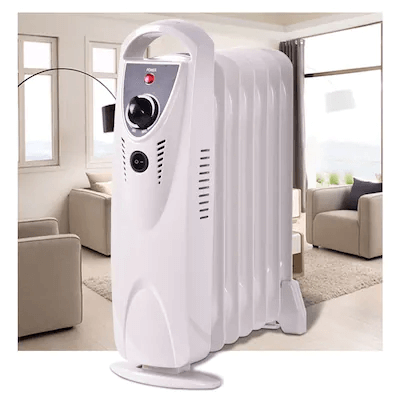It is always a challenge to know where you want to install water hammer arrestors because you don’t even know what part of your pipe the larger pressure of the rushing water affects.
Installing the water hammer arrestor in the wrong location will make it non-effect. It would be as if you haven’t even installed the water hammer arrestor in the first place, and the effect of installing it wrongly, or not installing it at all is deadly to your water systems and the pipes of your home.
Water hammer arrestors should be installed in areas of large supply or circulation of water such as in the water line that produces gushing shower water, flushing water, tap water, and water for washing machines.
Table of Contents
What is Water Hammer Arrestor?
To explain what a water hammer arrestor is, we first have to understand what a water hammer is. Have you, like many others, wondered how water suddenly stops when we turn off a water switch or tap on the sink?
It was rushing heavily when the tap was on, and it stops completely when we switch off the tap, where did the rest go? Why doesn’t the overload of water –or gushing water– destroy the pipes? Well, what you would refer to as ‘water overload’ is in fact, a water hammer.
When we suddenly close the valve or the tap, and the water that was pumping suddenly stops, the gushing water creates an overload that is forcing us to change direction or stop abruptly.
Many times, you hear the sounds of water rumbling in your walls as a result. This is called a water hammer. It occurs when you suddenly switch off a tap of water that connects to a larger pipe or water system.
In itself, it doesn’t do any damage whatsoever, but when it is in excess, it can affect your pipes, causing them to burst open and then further affect your walls as a burst pipe will cause water to soak into your walls, making it weak and susceptible to collapse. This is why we need water hammer arrestors.
Water hammer arrestors are installed to curb – or as the device itself is named, arrest – water hammer before it causes any damage to your fittings such as your pipes and wires within your walls.
This is why they are usually found around pipes that supply a greater amount of water such as around washing machine systems or toilets (flushing systems).
They are affixed inside the waterline to absorb the overload that is caused by the sudden change in the direction of the flow of water because you switched off the tap.
They are the solution to water hammers, and for them to function properly, you need to know exactly where to install them.
Where Should a Water Hammer Arrestor be Installed?
Water hammer arrestors are installed in areas of large supply or circulation of water, such as in the water line that produces gushing shower water, flushing water, tap water, and water for washing machines.
This completely depends on how your water system is run. The arrangement of the water pipes, the way it is run whether within a wall or on the wall, how long the water pipes run – that is, the length of the pipe and how long water travels.
It is important to note that, you shouldn’t install a water hammer arrestor where there is only a short supply of water, or where the speed of water is very low.
There are some of these water systems with low speeds. When the speed of water is low, there would be no problem with water overload. You don’t need a water hammer arrestor where there are no water hammers.
When you have established the arrangement of the pipe and also know for certain that the pressure or velocity of the water is high, therefore needing a water hammer arrestor, the ideal place to install the arrestor for maximum effect is very close to the pumping machine itself.
Other places where a water hammer arrestor can be installed are the point at which the pipe bends or switches direction (this is because it is where the pipe switches direction that the water also changes its flow), or in isolation, that is you can fix the arrestor anywhere in the waterline if you don’t know for certain where the larger pressure of the water gathers.
If you are not sure where a hint is, install it where you hear the rumbling sound of water in the pipe. That’s a good place. This way, you will be installing it around the point of water hammer origination.
Installing the water hammer arrestor at any of these points will get the job done and completely limit the effect of water hammers.
What are the Functions of a Water Hammer Arrestor?
The only reason to install a water hammer arrestor is to curb the overload of water in waterlines that have heavy velocities. It doesn’t have anything to do with the drinking of water.
When the speed of water is high, abruptly stopping the flow causes water hammers that can destroy water pipes and other fittings.
It can even destroy your walls when the walls begin to absorb the water from the destroyed pipe. It also causes uncomfortable noise inside walls.
To stop this noise, and to reduce the effect of water hammers, water hammer arrestors are installed close to the pumps, where the flow of water changes, or where the effect of the water hammer (noise) is felt and heard.
How to Install a Water Hammer Arrestor
To install a water hammer arrestor after locating the right places for installation, you need just one tool; a tongue-and-groove plier, and then the materials to use, which are the water hammer arrestors themselves.
- Once you have all the tools and materials needed for the installation, the next thing you should do is switch off the water and then detach the hoses from the valves.
- After that is done, you should then screw the water hammer arrestor to the water supply valve whose water hammers you want to arrest.
In most cases, you want to install more than one arrestor, depending on the valves concerned. While screwing the arrestors, make sure they are firm and tightly affixed so they don’t loosen when you aren’t watching.
This is where you use your tongue-and-groove plier. However, even while tightening, ensure you don’t over-tighten it so it doesn’t break up.
After this is done, you connect the hoses that you initially detached from the valves and switch your water back on. With these simple steps, you have your water hammer arrestor up and running.
When Should Hammer Arrestor be Installed?
You should install water hammer arrestors when you detect an overload of water because the valve tightens quickly.
When valves are tightened quickly, there is water concentration that causes water hammers, especially when the velocity of the running water is high.
You hear symptoms like belches and sounds in different areas of your wall where pipes run through. These signs tell you that you need to install a water hammer arrestor.
Final Thoughts
As earlier stated, knowing where to install water hammer arrestors makes a world of difference in the effectiveness of the arrestors.
It is important that when the speed of pumping water is high, denoted by the fast gushing water from whichever tap, you should know you need to install a water hammer arrestor.
Also, arrestors help you fix the problem of rumbling noise inside your walls that don’t allow you sound sleep in the middle of the night.









